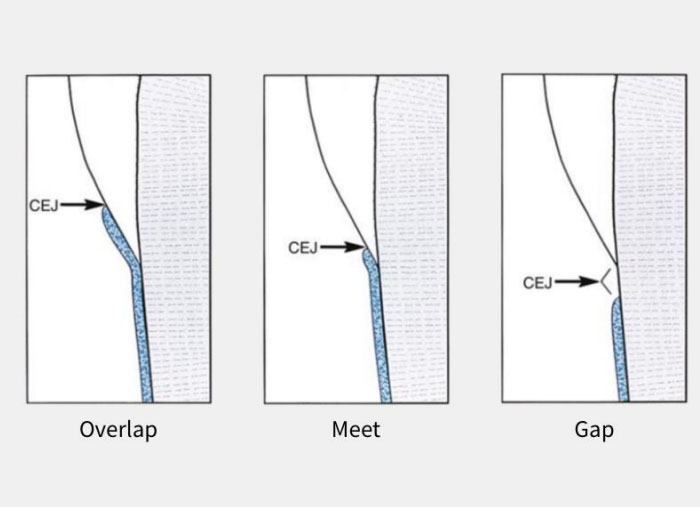- NEED HELP? CALL US NOW
- +919995411505
- [email protected]

Three types of junctions exist:
1. Sharp junction (butt joint): The cementum meets the enamel in a sharp line. This type is seen in 30% of teeth.
2. Gap junction: The cementum does not meet the enamel in the cervical region, and there is no CEJ. A portion of the root in the cervical region will be devoid of cementum. This may be due to delay in the degeneration of Hertwig’s epithelial root sheath, thereby preventing the contactbetween dental sac cells and dentin, leading to lack of differentiation of cementoblasts. This type of junction is seen in 10% of teeth.
3. Overlap junction: The cementum overlaps the enamel. This occurs when the reduced enamel epithelium covering the crown degenerates near the cervical region, permitting the dental sac cells to come into contact with the enamel. The cells differentiate into cementoblast and thereby deposit cementum over the enamel. This is the most common type of CEJ, seen in 60% of the teeth. Very rarely, the enamel overlaps the cementum at the junctional region.

CEMENTODENTINAL JUNCTION
Cementodentinal junction (CDJ) between cementum and dentin is usually smooth but can be scalloped in deciduous teeth. The CDJ is more prominent in cellular cementum than acellular cementum. At the CDJ, the dentinal fibres intermingle with the cemental fibres. Rarely, cementum is separated from dentin by a layer called intermediate cementum. It appears structureless and does not show features of either cementum or dentin.
Intermediate cementum is also known as the hyaline layer of Hopewell Smith, and it is mostly seen in the apical portion of the root.




